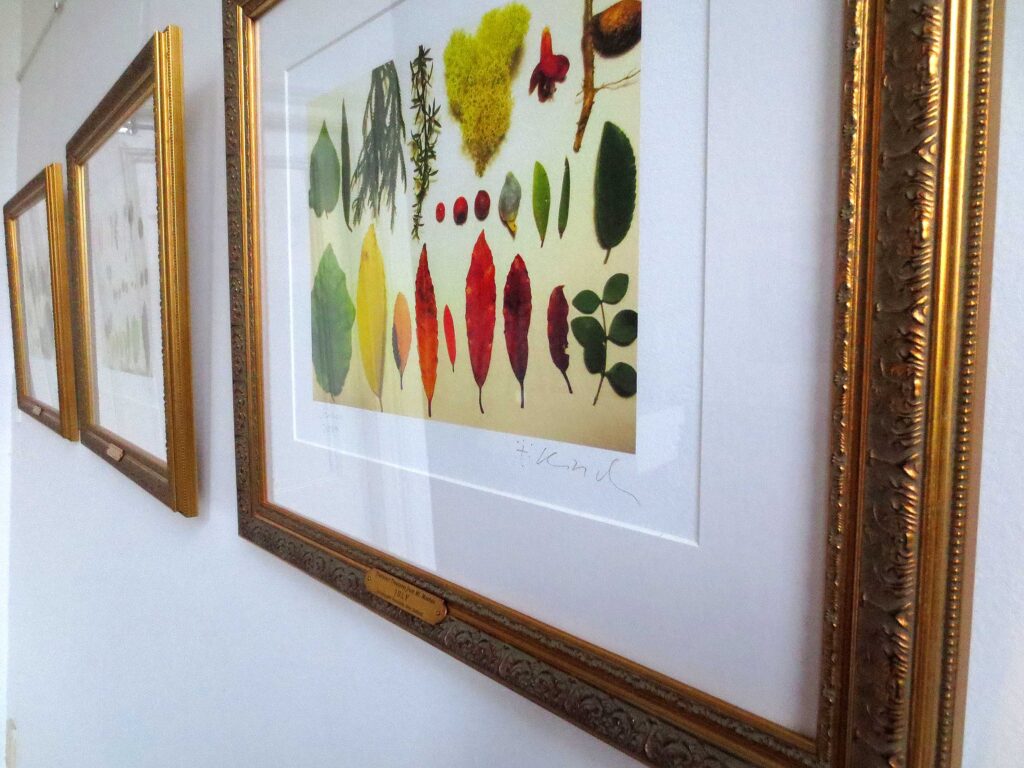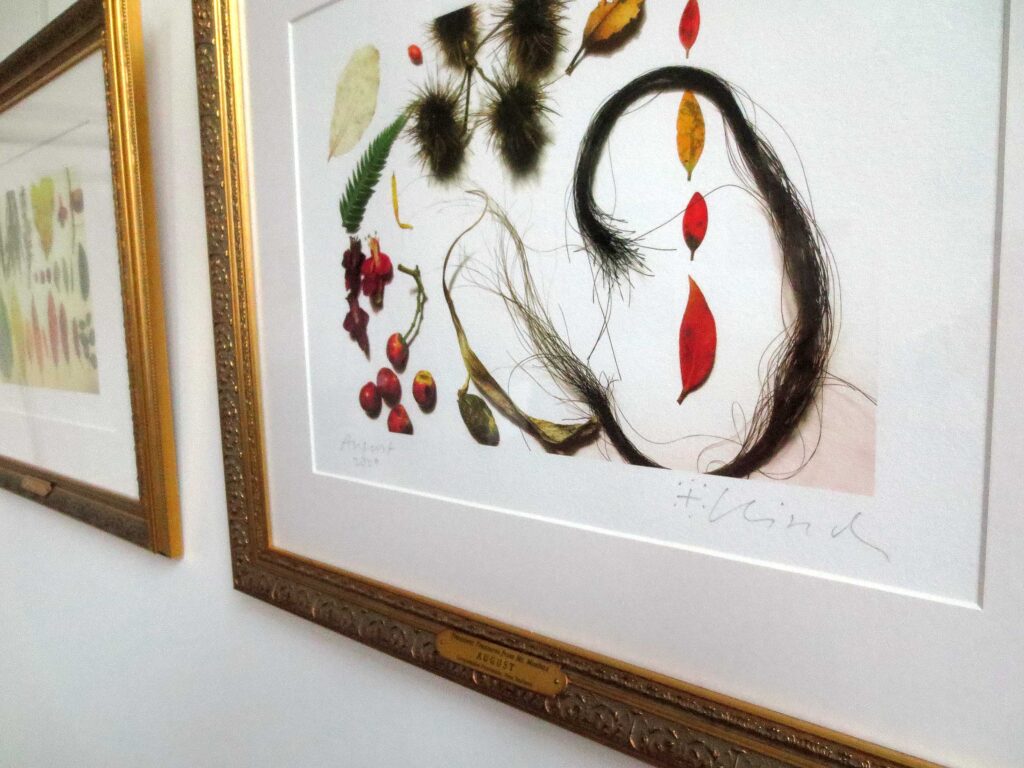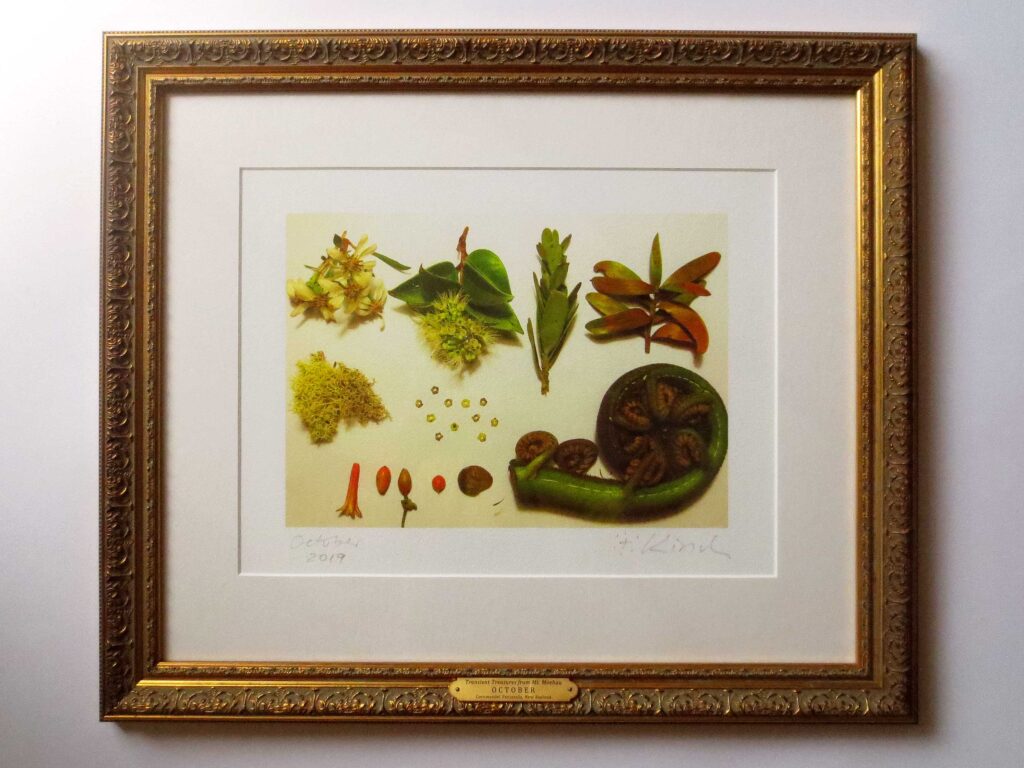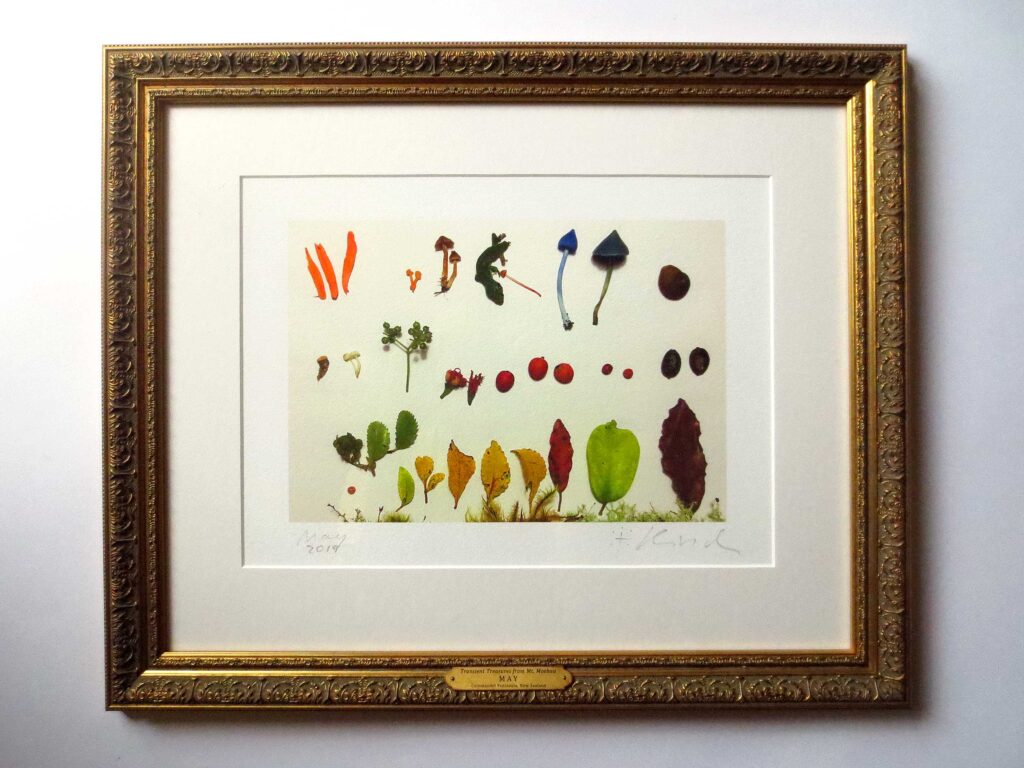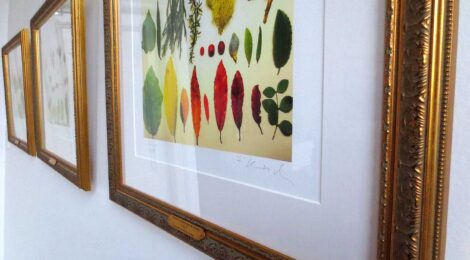
Transient Treasures
Transient Treasures from Mt. Moehau, Coromandel Peninsula, New Zealand
2019 Daniel Kirsch, 5 archival giclée print on Hahnemühle etching paper, ornate gold frames, gilded name plates
The notion that the NZ bush is nothing but green featuring few other colours is clearly defied by these beautiful and surprisingly colourful compositions made of found objects from the upper reaches of Moehau Mountain.
The artist traverses the flanks and main ridge of the mountain several days each month, following (and maintaining) a number of stoat trap lines. At the end of each of those days, a set of unique ‘objets trouvées’ found during that day is being arranged with the purpose of documenting the found objects as well as creating distinct compositions.
The objects are transient, their physical form not permanent, they quickly decompose, so the only way to preserve the composition of objects is through the lens of a camera.
Each month the outcome of the composition is the symbiosis of the artist’s inspiration of arranging the forms and colours as if painting with those objects, yet nature itself determining which forms and colours are available to the artist at that time.
Both nature’s contribution and the artist play an equal part in the creative process and are inseparable.
The ornate gold frames and gilded name plates reference the colonial era and early botanists who came to this country in the period of first contact. Their approach displays a rather distanced attitude towards nature – reflected in collections of single items brought back to their own countries and exposed in museums as fragments – not perceiving the environment that surrounds us as one living organism. Instead, only singular parts of it were selected, each given a material value of how they can be exploited by humans.
It is this approach which ultimately leads to exhaustion and alteration of singular parts of the environment, ultimately destroying the entity which they are part of. In New Zealand, this approach has led to the loss of many unique species and the involved problems of an unbalanced ecosystem.
In contrast, the artist’s approach in assembling the individual objects found in nature is a wholistic one, not giving one of them more value than another, but looking for how they interact with each other to become one and reflect the whole.

